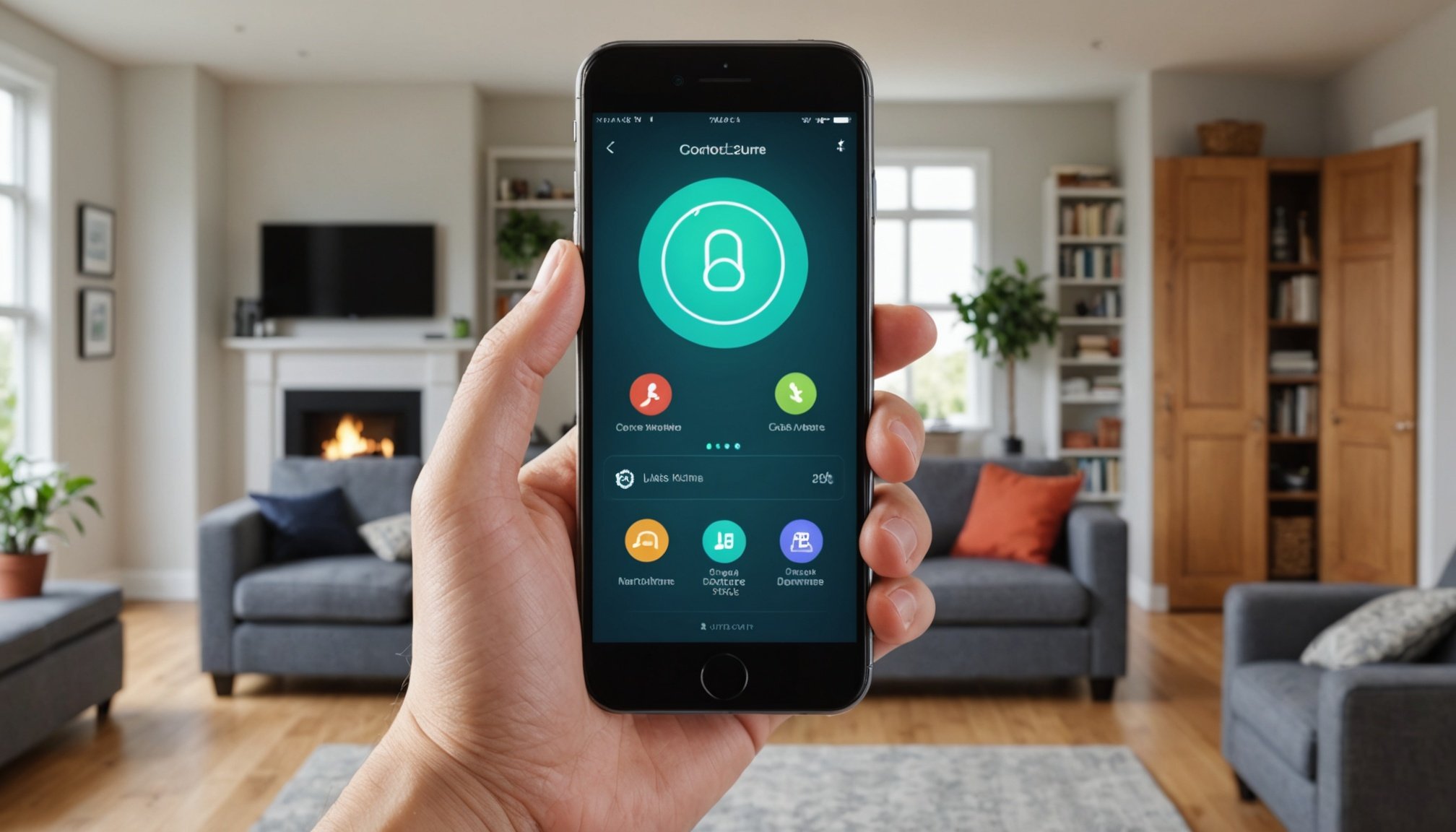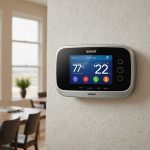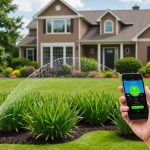Imagine controlling every device in your home with just a tap on your smartphone. Home automation isn't just about convenience; it enhances security and energy efficiency. This step-by-step guide simplifies the process of setting up and managing your smart devices, making technology accessible for everyone. Unlock the potential of your home, explore the latest advancements, and discover how to effortlessly integrate smart solutions into your daily life. Get ready to transform your living space into a seamless, connected haven.
Understanding Home Automation
Home automation is transforming how we interact with our living spaces, offering convenience and efficiency. At its core, home automation involves the integration of various smart devices to create a cohesive and responsive environment. These systems enable users to control lighting, heating, security, and more through a centralised interface, often accessible via a smartphone or tablet.
Also to read : Mastering Smart Home Irrigation: The Ultimate Guide to Controlling Your System with Your Smartphone
The benefits of home automation are numerous. It enhances energy efficiency by allowing precise control over appliances and systems, potentially reducing utility bills. Additionally, automation can improve security with smart locks and cameras, providing peace of mind. Comfort is another advantage, as users can customise settings to suit their preferences and routines.
Key components of a smart home system include a central hub or controller, which acts as the brain, connecting various devices. Sensors play a critical role, detecting changes in the environment and triggering responses. Smart devices such as thermostats, lights, and security systems are integral, each contributing to the system's overall functionality.
Topic to read : Unlock Energy Savings: How to Seamlessly Connect Your Smartphone with a Smart Thermostat
The market offers a wide array of smart devices, ranging from simple plug-and-play gadgets to more complex, integrated solutions. Popular options include smart speakers, automated lighting systems, and intelligent thermostats. These devices provide users with flexibility and control, making home automation an attractive option for modern living.
Setting Up Your Smart Home
Creating a smart home setup begins with selecting the right smart hub. This decision is crucial as the hub serves as the central command, connecting and managing all your devices. Popular choices include Amazon Echo, Google Nest Hub, and Samsung SmartThings. Each offers unique features and compatibility, so consider your existing devices and future needs before deciding.
Once you've chosen your hub, the next step is installing your smart devices. Begin by setting up the hub, following the manufacturer's instructions for optimal performance. Ensure each device is compatible with your hub. Most smart devices have user-friendly apps that guide you through the installation process, making it straightforward even for beginners.
A critical aspect of a successful smart home setup is ensuring robust Wi-Fi connectivity. Smart devices rely heavily on a stable internet connection to function seamlessly. Position your router centrally to minimise dead zones, and consider investing in Wi-Fi extenders if necessary. Compatibility is equally important; always check that your devices support your network's specifications to avoid connectivity issues. By carefully planning and following these steps, you can create an efficient and responsive smart home environment.
Mobile Apps for Smart Device Control
Smart device apps are essential tools for managing your home automation system. They provide a user-friendly interface to control and monitor your smart devices.
Recommended Apps for Home Automation
Choosing the right app can significantly enhance your smart home experience. Popular options include the Google Home app for Google devices, Amazon Alexa for Echo products, and Samsung SmartThings for a broad range of compatible devices. Each app offers unique features tailored to their respective ecosystems, ensuring seamless integration and control.
Features to Look for in a Smart Home App
When selecting a smart home app, consider features such as compatibility with multiple devices, ease of use, and customisation options. Look for apps that offer voice control, scheduling, and remote access. These features allow you to automate routines and manage your home even when you're away.
App Configuration and Setup
Configuring your smart home app involves syncing it with your devices. Begin by downloading the app from your device's app store. Follow the on-screen instructions to connect each smart device, ensuring they are on the same Wi-Fi network. Customise settings to suit your preferences, such as setting routines and notifications, for an optimal home automation experience.
Troubleshooting Common Issues
Navigating smart home troubleshooting can be daunting, but understanding common issues helps streamline solutions. Connectivity problems often arise due to weak Wi-Fi signals. Ensure your router is centrally located and consider using Wi-Fi extenders to bolster coverage. If devices disconnect frequently, restart them and your router to re-establish connections.
Resolving App-Related Problems
App-related issues can hinder smart home functionality. If an app crashes or fails to sync, check for updates in your device's app store. Ensure your smartphone's operating system is compatible with the app. Clearing the app cache or reinstalling it can resolve persistent glitches.
Ensuring Device Compatibility and Updates
Compatibility is crucial in a smart home setup. Devices may not function correctly if they're incompatible with your hub or network. Always verify compatibility before purchase. Regularly update device firmware and apps to maintain optimal performance and security. Most smart devices notify users of available updates, but manual checks are advisable to avoid missing critical improvements.
Optimizing Smart Device Performance
Enhancing smart device optimization is crucial for a seamless home automation experience. To improve device response time, ensure your devices are connected to a robust Wi-Fi network. Position your router centrally and limit the number of connected devices to avoid bandwidth congestion. Regularly restarting your devices can also enhance performance by clearing temporary data.
Maintaining the health of your smart devices involves regular updates. Check for firmware updates frequently, as they often include performance enhancements and security patches. Clean your devices to prevent dust buildup that can interfere with sensors and connectivity.
Reducing energy consumption is another aspect of smart device optimization. Use scheduling features to operate devices only when needed. Smart thermostats and lighting systems can be programmed to adjust based on occupancy, saving energy. Additionally, consider devices with energy-saving modes to further reduce consumption.
By following these best practices, you can ensure your smart devices function efficiently, providing a responsive and energy-conscious home automation system.
Enhancing Security in Your Smart Home
Securing your smart home is essential to protect your privacy and data. As smart devices become more integrated into daily life, they also become potential targets for cyber threats. Ensuring robust smart home security involves several key practices.
Recommended Practices for Safeguarding Your Network:
- Use strong, unique passwords for each device and update them regularly.
- Enable two-factor authentication where possible, adding an extra layer of security.
- Regularly update device firmware to patch vulnerabilities.
- Segment your network by creating a guest network for visitors, keeping your primary network more secure.
Smart Security Devices Overview:
Investing in smart security devices enhances protection. Smart locks provide secure access control, allowing you to manage entry remotely. Security cameras offer real-time monitoring and alerts, keeping you informed of any unusual activity. Motion detectors and smart alarms can be integrated to trigger alerts and deter intruders.
By implementing these strategies and devices, you can create a secure smart home environment, safeguarding your technology and personal information. Prioritising security not only protects your home but also ensures a seamless and worry-free smart home experience.
Advanced Home Automation Techniques
Advanced home automation techniques elevate your living experience by leveraging technology to its fullest potential. A key strategy involves utilising automation routines and schedules. By setting specific times for lights, thermostats, and appliances to operate, you can optimise energy use and enhance convenience. For instance, schedule your lights to turn on at sunset or your coffee maker to start brewing before you wake up.
Integrating voice assistants like Alexa or Google Assistant provides seamless control over your smart home. These assistants allow you to manage devices hands-free, making everyday tasks more efficient. Simply issuing voice commands can adjust lighting, play music, or even lock doors, adding an extra layer of convenience.
Exploring tools like IFTTT (If This Then That) expands the capabilities of your smart home setup. IFTTT enables you to create custom automation rules that connect different apps and devices. For example, you can set a rule to receive a notification when your smart security camera detects motion or to turn off lights when you leave home. These advanced techniques not only enhance functionality but also personalise your home automation experience.
Future Trends in Home Automation
The future of home automation is poised for exciting advancements, with emerging technologies set to redefine smart home systems. Innovations such as artificial intelligence and machine learning are expected to play pivotal roles, enabling homes to learn and adapt to user behaviours, enhancing personalisation and efficiency.
Predictions for the evolution of home automation indicate a shift towards more integrated and seamless systems. Homes will likely become more interconnected, with devices communicating effortlessly to create a harmonious environment. Expect advancements in energy management, where smart grids and renewable energy sources will be optimised for better sustainability.
Staying updated with industry advancements is crucial for those interested in the future of home automation. Engaging with technology forums, subscribing to industry newsletters, and attending smart home expos can provide valuable insights. Additionally, following key players in the tech industry on social media can offer the latest updates and innovations.
As these trends continue to develop, the potential for creating a more responsive and intuitive living space becomes increasingly attainable, promising a future where homes not only meet but anticipate the needs of their inhabitants.










